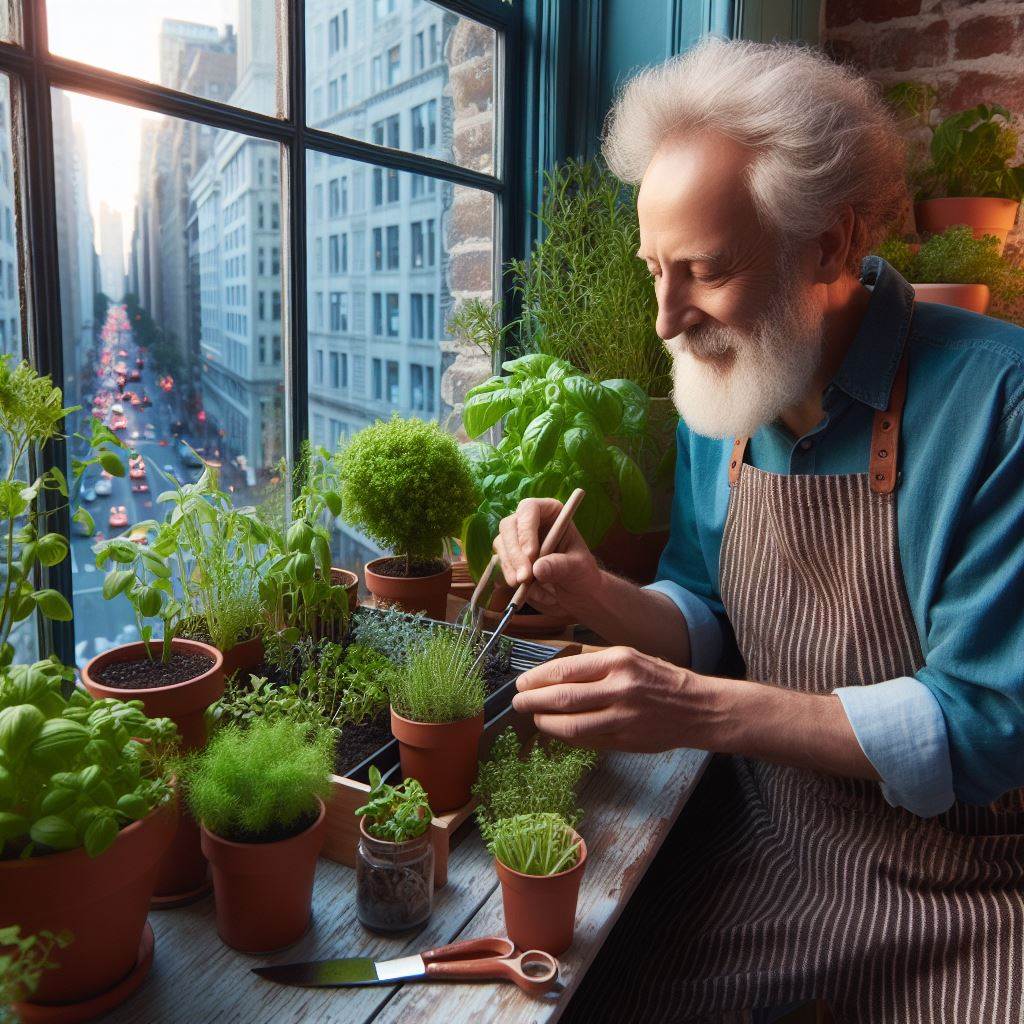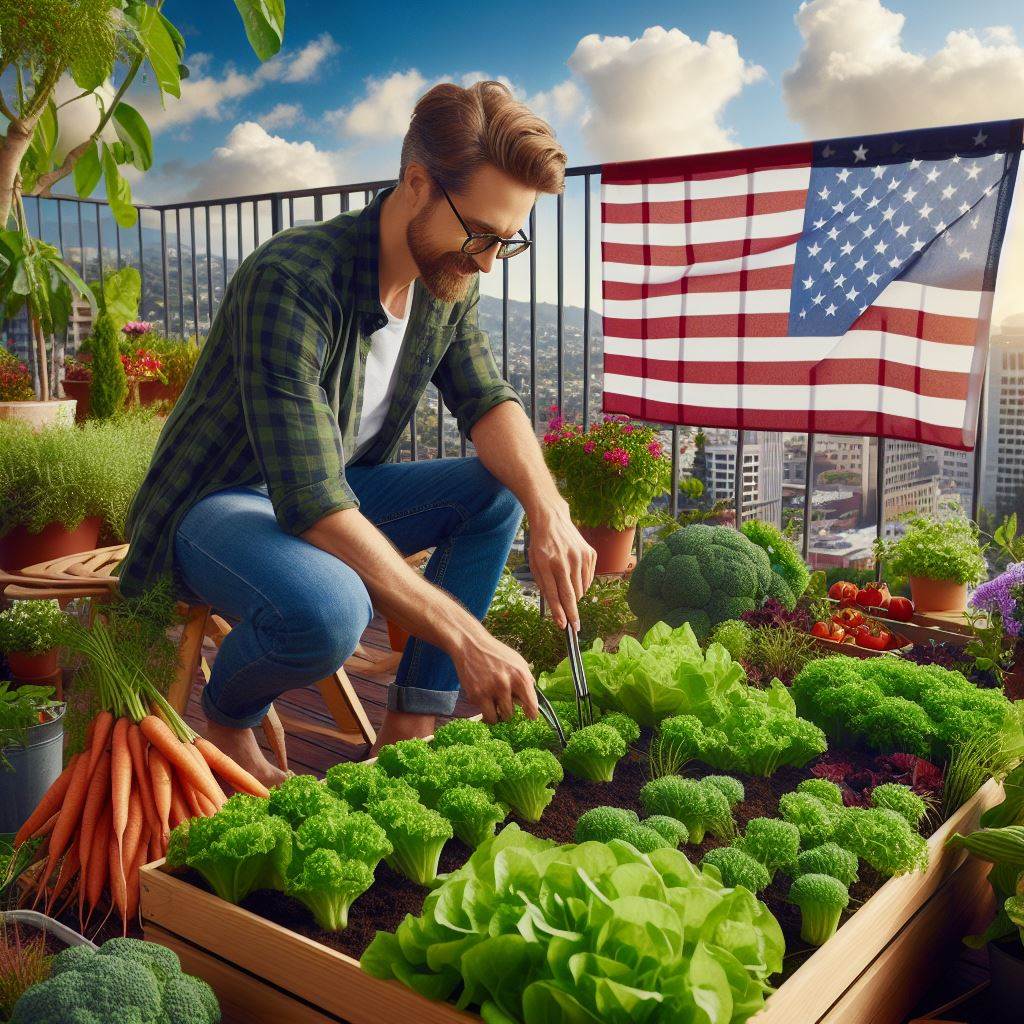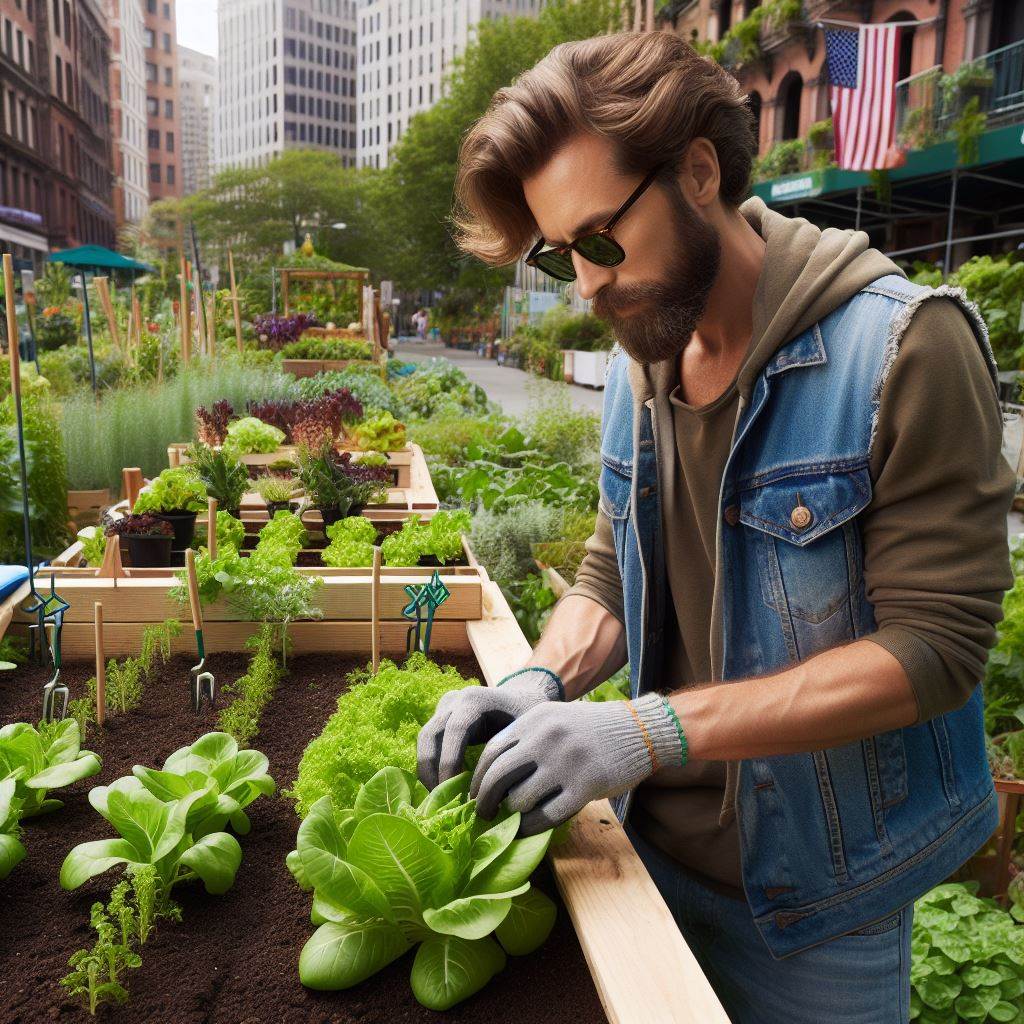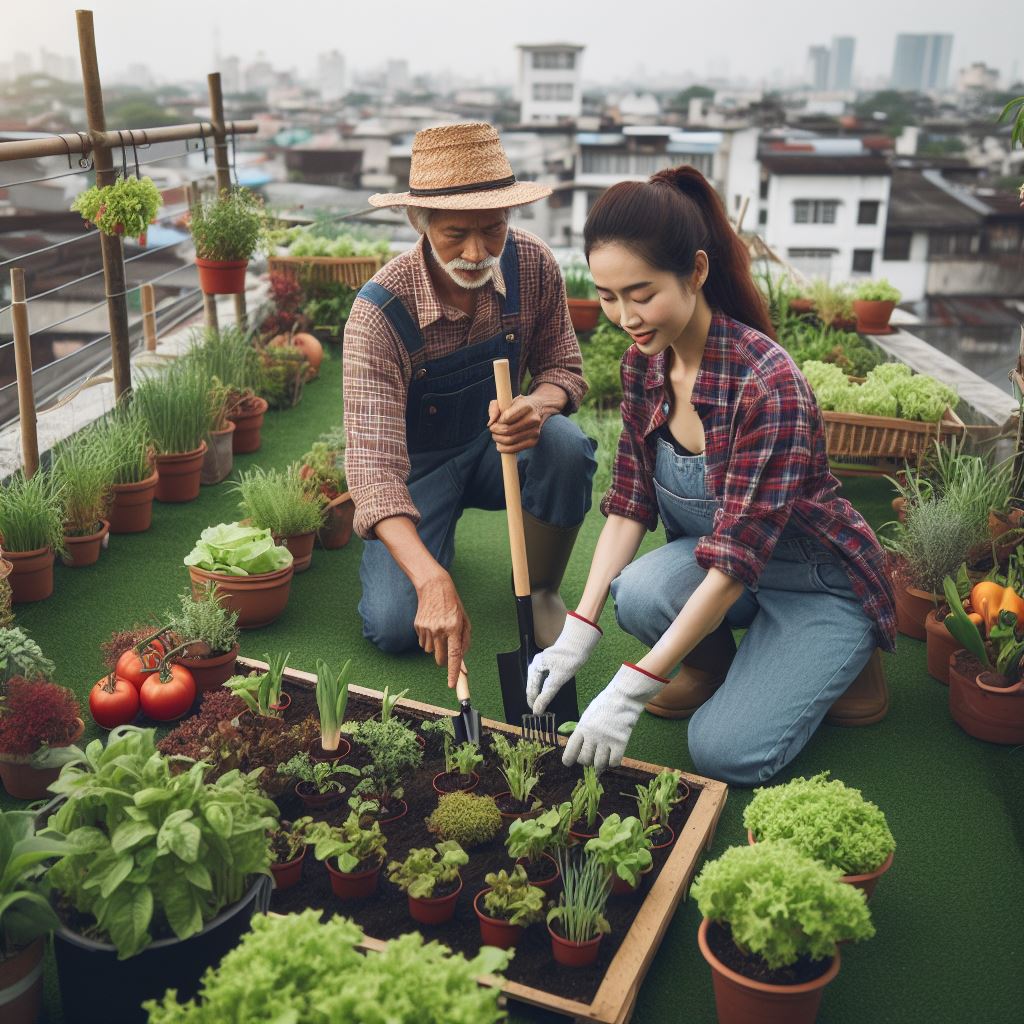Introduction
In small gardens and farms, proper watering is crucial for plant growth and yield.
This blog post will discuss the importance of watering and provide useful tips for effective watering techniques.
Whether you have a small backyard garden or a small-scale farm, these tips will help you achieve optimal results.
From understanding the watering needs of different plants to selecting the right watering tools, we will cover it all.
Additionally, we will explore the benefits of using drip irrigation systems and mulching to conserve water and reduce weed growth.
If you are interested in maximizing the productivity of your small garden or farm, keep reading to learn the best watering practices for your plants.
Choosing the Right Watering System
Assessing the specific needs of the garden or farm
When choosing a watering system, it is important to consider the specific needs of your garden or farm.
Factors such as the size of the area, the types of plants, and the soil conditions all play a role in determining the best watering system.
Determining the available water sources
Before selecting a watering system, it is crucial to identify the available water sources.
This could include municipal water supply, wells, rainwater harvesting systems, or even recycled greywater.
Understanding your water sources will help you make an informed decision.
Options for watering systems
There are several options for watering systems that you can choose from:
1. Hand Watering
Hand watering is the most basic and traditional method of watering.
It involves using a watering can or hose to manually water the plants.
This option is suitable for small gardens or areas with few plants, but it can be time-consuming and labor-intensive.
Transform Your Agribusiness
Unlock your farm's potential with expert advice tailored to your needs. Get actionable steps that drive real results.
Get Started2. Sprinkler Systems
Sprinkler systems are popular choices for larger gardens or farms.
They distribute water using sprinkler heads that rotate or oscillate, covering a wide area.
Sprinkler systems are efficient, provide uniform coverage, and are easy to install.
However, they can be wasteful and are not suitable for all types of plants.
3. Drip Irrigation
Drip irrigation is a method that provides water directly to the roots of plants.
It involves a series of tubes or hoses with emitters that release water slowly and consistently.
Drip irrigation is highly efficient, reduces water waste, and is suitable for all types of plants.
It can be a bit more expensive to set up initially but is a long-term investment.
4. Soaker Hoses
Soaker hoses are similar to drip irrigation systems but are made of porous material that allows water to seep out along the entire length of the hose.
They are usually laid on the ground or buried slightly below the soil surface.
Soaker hoses are affordable, easy to install, and ideal for areas with dense plantings.
Pros and cons of each system
Each watering system has its advantages and disadvantages.
Here is a summary:
- Hand Watering: Pros – inexpensive, flexible. Cons – time-consuming, labor-intensive, inconsistent watering.
- Sprinkler Systems: Pros – easy to install, wide coverage. Cons – water wastage, uneven distribution, not suitable for all plants.
- Drip Irrigation: Pros – efficient, precise watering, suitable for all plants. Cons – initial setup cost, potential clogging of emitters.
- Soaker Hoses: Pros – affordable, easy installation, suitable for dense plantings. Cons – may require additional maintenance, limited coverage area.
In general, choosing the right watering system for your small garden or farm is crucial to ensure the health and productivity of your plants.
Assessing specific needs, determining available water sources, and considering the pros and cons of each system will help you make an informed decision.
Read: Seasonal Planting Strategies for Hobbyists
Calculating Watering Needs
Understanding the water requirements of different plants
To properly water your small garden or farm, it’s crucial to understand the specific water needs of your plants.
Different plants have varying requirements based on their species, size, and stage of growth.
By understanding these requirements, you can efficiently manage your watering schedule.
Factors affecting watering needs
Several factors influence the watering needs of plants.
It’s important to consider these factors to ensure that your plants receive the right amount of water without over or under watering them.
Weather conditions
The weather plays a significant role in determining how much water your plants need.
During hot and dry spells, plants often require more water as evaporation rates increase.
In contrast, cooler and rainy weather may reduce the need for frequent watering.
Showcase Your Farming Business
Publish your professional farming services profile on our blog for a one-time fee of $200 and reach a dedicated audience of farmers and agribusiness owners.
Publish Your ProfileSoil type and moisture retention
The type of soil you have affects how water is retained and distributed to the plant’s roots.
Sandy soils tend to drain water more quickly, while clay soils retain water for longer periods.
Understanding your soil type allows you to adjust your watering frequency accordingly.
Plant maturity and growth stage
Young plants have developing root systems and require more frequent watering to establish themselves.
As they mature, watering needs may decrease.
Certain growth stages, such as flowering or fruiting, may require increased water supply to support the plants’ energy demands.
Tools and methods for measuring soil moisture
Accurate measurement of soil moisture is crucial for effective watering.
Several tools and methods are available to help you determine when your plants need watering.
One commonly used tool is a soil moisture meter, which provides instant readings of the soil’s moisture content.
These meters have probes that can be inserted into the soil to measure moisture levels at different depths.
Another method is the hand-feel test, where you squeeze a small sample of soil in your hand to assess its moisture content.
If the soil clumps together and feels moist, it indicates sufficient moisture. Conversely, if it feels dry and falls apart easily, it signifies the need for watering.
Additionally, you can use visual indicators like wilted leaves or dry soil surface as cues for watering.
However, it’s important to note that these indicators are not always reliable, as some plants naturally wilt during the day even with adequate water supply.
Investing in an irrigation system, such as drip or sprinkler systems, can also help ensure efficient and consistent watering.
These systems can be programmed based on your plants’ water requirements and can significantly reduce water waste.
In a nutshell, understanding the water requirements of your plants is essential for efficient watering in small gardens and farms.
Factors like weather conditions, soil type, and plant maturity affect watering needs.
By using tools and methods to measure soil moisture and investing in irrigation systems, you can effectively manage your watering schedule and promote healthy plant growth.
Remember to monitor your plants regularly and adjust your watering practices as needed to ensure optimal growth and yield.
Read: Composting: A Guide for Urban Farmers
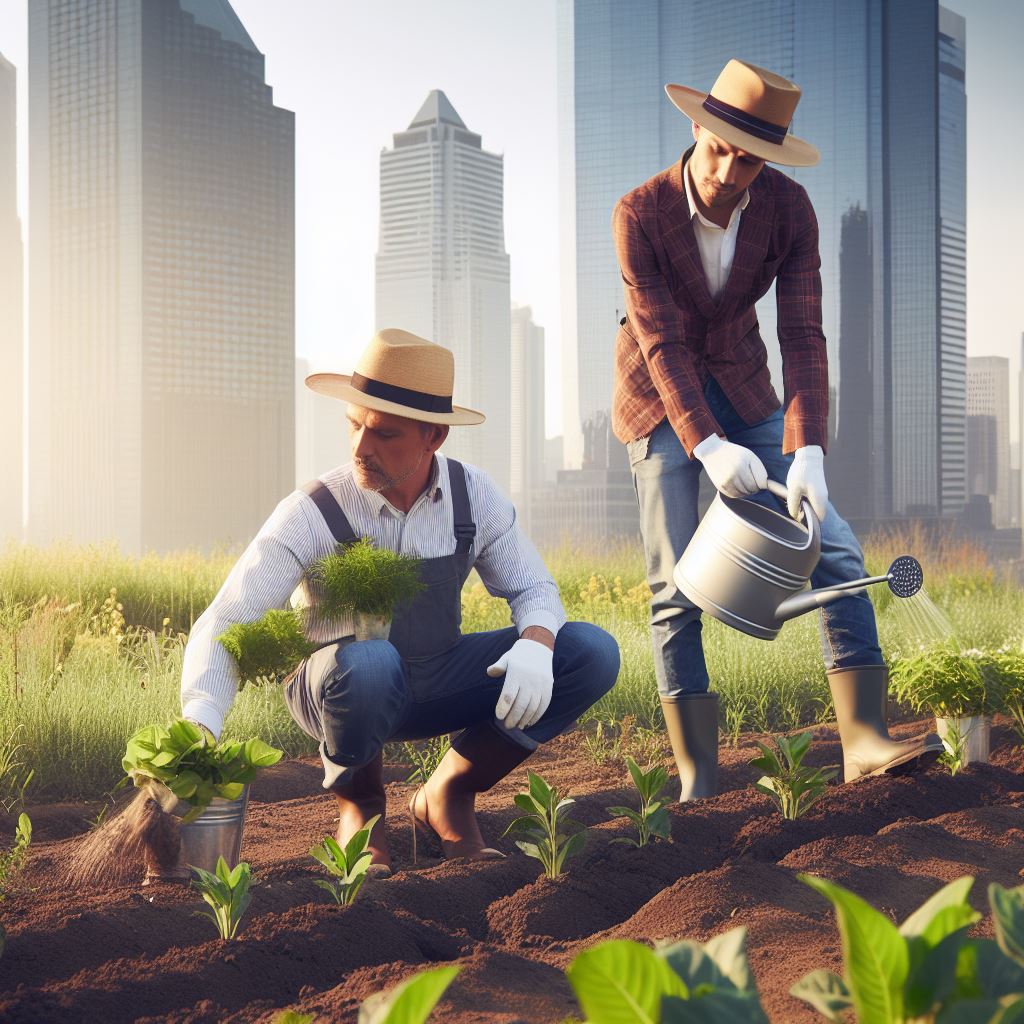
Watering Techniques for Small Gardens
Proper watering techniques are crucial for the success of small gardens and farms.
In this section, we will discuss effective watering strategies that will help ensure the health and productivity of your plants.
Proper timing of watering
Watering at the right time of day is essential for optimal plant growth.
It is recommended to water in the morning when the temperature is cooler, allowing the plants to absorb moisture more efficiently.
Avoid watering during hot or windy periods as it can result in water loss through evaporation.
Watering deeply and less frequently
It is important to water your garden deeply rather than shallowly.
Deep watering promotes the development of deeper roots, which in turn helps plants access water and nutrients more effectively.
By watering deeply, you can also prevent water runoff and evaporation, ensuring that your plants receive sufficient moisture.
Strategies for watering containers and raised beds
When it comes to watering containers and raised beds, proper drainage is crucial.
Monitor the drainage of your containers to prevent waterlogged roots, which can lead to root rot.
Consider adding mulch to retain soil moisture, particularly in raised beds, as it helps prevent evaporation and keeps the soil moist for longer periods.
Avoiding overwatering
Overwatering can be detrimental to plants as it can lead to root rot and other issues.
Signs of overwatering include yellowing leaves, wilting, and stunted growth.
To avoid overwatering, adjust your watering frequency based on the specific needs of each plant.
Factors such as the type of plant, weather conditions, and soil moisture levels should be taken into consideration.
By following these watering techniques, you can ensure that your small garden or farm thrives.
Remember to be mindful of the timing, watering deeply but less frequently, and employing strategies specific to containers and raised beds.
Avoiding overwatering will promote healthier plants and prevent water wastage.
Read: Balcony Gardens: Growing in Small Spaces
Showcase Your Farming Business
Publish your professional farming services profile on our blog for a one-time fee of $200 and reach a dedicated audience of farmers and agribusiness owners.
Publish Your ProfileWater Conservation Practices
Collecting and utilizing rainwater
- Collect rainwater in barrels or buckets during rainy days for use in watering plants.
- Install a rain barrel system that collects rainwater from the roof and directs it to the garden.
- Use stored rainwater to irrigate plants during dry seasons, reducing the need for tap water.
Recycling greywater for irrigation
- Greywater, water that comes from household activities like dishwashing or laundry, can be reused for watering plants.
- Install a greywater recycling system to divert greywater from drains and use it in the garden.
- Make sure to use biodegradable soaps and detergents to prevent harm to plants.
Utilizing mulch and organic matter
- Mulch helps to retain moisture in the soil, reducing the need for frequent watering.
- Spread a layer of organic mulch like wood chips or straw around plants to keep the soil moist.
- Organic matter improves soil structure, allowing it to hold water better, reducing water loss through drainage.
Minimizing water loss through evaporation and runoff
- Water early in the morning or late in the evening when evaporation rates are lower.
- Avoid watering on windy days as it can cause water to evaporate quickly and not reach plants.
- Direct water flow to the root zone of plants and avoid watering non-essential areas like walkways.
Implementing these water conservation practices will not only help save water but also promote a healthy and sustainable garden.
So start conserving water in your small garden or farm today!
Water conservation practices are essential for small gardens and farms.
By collecting and utilizing rainwater, recycling greywater, utilizing mulch and organic matter, and minimizing water loss through evaporation and runoff, gardeners can significantly reduce their water usage.
Read: Soil Health: Tips for Small-Scale Farmers
Conclusion
In this blog section, we discussed some key points for watering small gardens and farms.
It is important to implement proper watering practices to ensure healthy plant growth.
By following the tips mentioned, readers can water their gardens effectively and reduce water waste.
To learn more about irrigation methods and water-saving techniques, check out our additional resources section.
These practices promote sustainability and help preserve water resources for future generations.
So, let’s all make an active effort to conserve water and create a greener and more sustainable world.
Stay tuned for future blog posts where we will delve deeper into related topics such as soil moisture management.
Remember, proper watering is the foundation for a thriving garden or farm, so start implementing these tips today!

